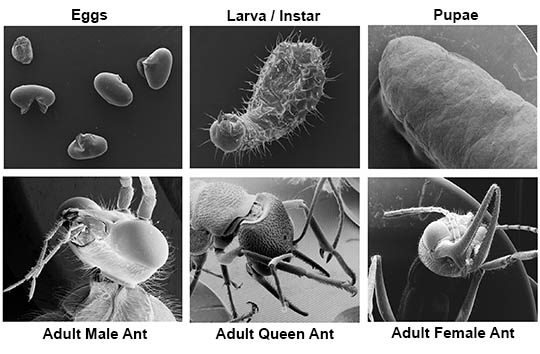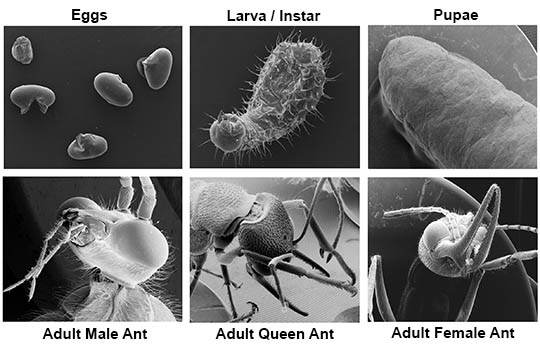
Get ready to be amazed by the incredible transformation that occurs during the pupa stage of a butterfly’s life! In this captivating article, we will take a closer look at the magical process of metamorphosis. From the moment a caterpillar forms its protective cocoon, to the stunning emergence of a beautiful butterfly, you will be transported into a world where nature works its enchanting wonders. Join us as we unravel the mysteries of the pupa stage and discover the astonishing beauty that lies within this small, hidden chrysalis. Get ready for a journey that will leave you awestruck and inspired!
1. What is Metamorphosis?
1.1 Definition of Metamorphosis
Metamorphosis is a fascinating and mysterious natural process that involves a complete transformation in the body structure and appearance of certain animals, particularly insects. It is a dynamic and complex phenomenon that allows these creatures to evolve through distinct developmental stages, leading to their ultimate form as adults. The word “metamorphosis” comes from the Greek words “meta,” meaning change, and “morphosis,” meaning form. This incredible transformation is evident in the life cycle of insects, where they undergo dramatic physical and physiological changes.
1.2 Importance of Metamorphosis in Nature
Metamorphosis plays a vital role in the cycle of life and contributes to the survival and diversity of various species in nature. It enables insects to adapt to different environments, exploit diverse food sources, and occupy various ecological niches. Additionally, metamorphosis facilitates the specialization of certain traits in specific stages of an insect’s life, increasing their chances of survival and reproduction. The ability of insects to undergo metamorphosis is crucial for pollination, seed dispersal, and natural pest control, making them an integral part of numerous ecosystems.
2. The Life Cycle of an Insect
2.1 Egg Stage
The life cycle of an insect typically begins with the egg stage. A female insect lays eggs, either singly or in clusters, in suitable locations that provide the necessary conditions for the survival and development of the offspring. The eggs serve as protective capsules, ensuring the safety of the developing embryos and their future survival.
2.2 Larva Stage
After the eggs hatch, the larva stage begins. The larva, commonly referred to as a caterpillar, is a voracious eater and undergoes significant growth. This stage is characterized by intense feeding and rapid development, as the insect consumes large amounts of food to fuel its transformation. The larva may molt several times, shedding its exoskeleton to accommodate its increasing size.
2.3 Pupa Stage
As the larva completes its growth, it enters the mesmerizing pupa stage. The pupa, also known as a chrysalis, is a protective casing that encloses the insect’s body and shelters it during its metamorphic journey. Inside the pupa, profound changes take place, marking the transition from the larval form to the adult form. This stage is a period of rest and transformation, where the insect undergoes remarkable structural and physiological modifications.
2.4 Adult Stage
Finally, the pupa stage concludes with the emergence of the fully developed adult insect. The adult stage is the culmination of the metamorphosis process, where the once-immobile pupa transforms into a winged and reproductive adult. The adult insect’s primary goals are to find a mate, reproduce, and ensure the survival of the next generation through the continuation of the life cycle.
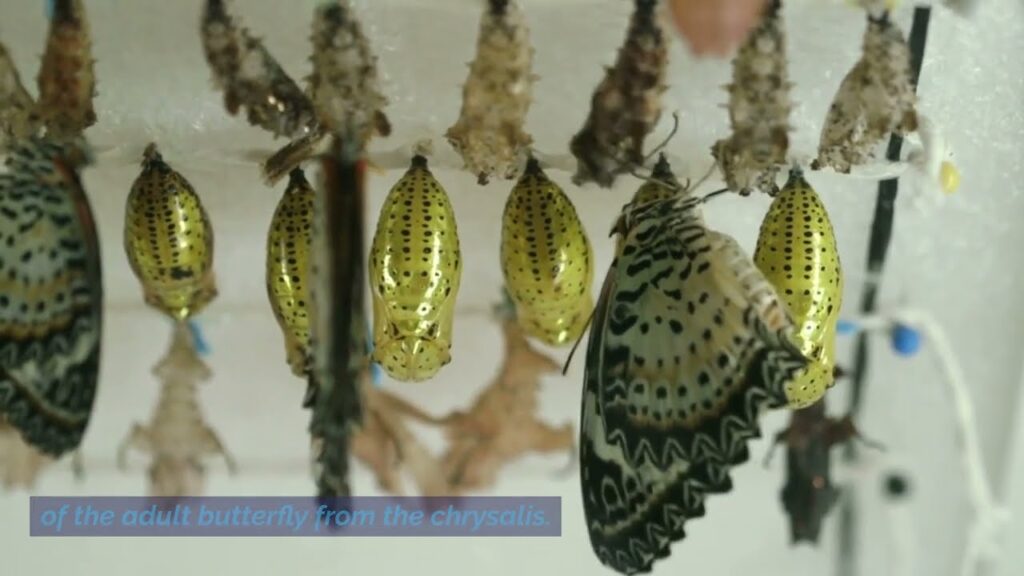
3. Understanding the Pupa Stage
3.1 Definition of the Pupa Stage
The pupa stage, also known as the chrysalis stage, is a crucial phase in the life cycle of insects that undergo complete metamorphosis. It can be described as a period of transformation and reorganization of the insect’s body, preparing it for its transition into the adult stage. During this stage, the larval tissues reorganize, forming the complex structures necessary for adult life, such as wings, reproductive organs, and other characteristic features.
3.2 Duration of the Pupa Stage
The duration of the pupa stage varies significantly among different insect species. Some insects spend only a few days as pupae, while others remain in this stage for weeks, months, or even years. The length of the pupa stage depends on various factors, including the insect species, environmental conditions, and available resources. The timing of pupation is often influenced by external cues, such as temperature, humidity, and photoperiod, ensuring that the insect emerges at the most favorable time for its survival.
3.3 Physical Changes
Inside the pupa, intricate physical changes occur that shape the insect’s body into its adult form. The process, known as histolysis, involves the breakdown of larval tissues and the reassembly of new structures. The pupal epidermis, often called the cuticle, becomes a transparent and flexible sheath, providing protection while allowing the underlying changes to take place. Wings, legs, antenna, and reproductive organs develop and differentiate, giving the adult insect its characteristic features.
3.4 Biological Processes
Beyond the physical changes, significant biological processes unfold during the pupa stage. Hormonal regulation drives these processes, controlling the timing and sequence of events. Specialized cells called imaginal discs, which are present throughout the larval stage, undergo rapid growth and differentiation. These discs contain the genetic blueprint for the adult structures, and as they develop, they replace the corresponding larval tissues. Additionally, complex biochemical reactions occur, ensuring the proper formation of tissues, organs, and physiological systems.
4. Inside the Chrysalis
4.1 Forming the Chrysalis
The formation of the chrysalis is a remarkable aspect of the pupa stage, providing a safe and enclosed environment for the insect’s metamorphosis. After the larval stage, the insect typically attaches itself to a substrate using silk threads or other adhesive secretions. The pupal cuticle then hardens, creating a protective shell around the insect’s body. This shell shields the developing adult structures from potential harm and provides stability during the intricate processes taking place.
4.2 Protection and Defense Mechanisms
Within the chrysalis, insects have evolved various protection and defense mechanisms. Some insects produce toxic compounds or distasteful substances during the larval stage, which persist into the pupal stage, deterring potential predators. Other species, instead of relying on chemicals, rely on camouflage or mimicry, blending into their surroundings or imitating harmful organisms to avoid detection. These adaptations enhance the chances of survival during the vulnerable pupal period.
4.3 Metamorphosis within the Chrysalis
While enclosed in the chrysalis, the insect’s body undergoes a series of miraculous transformations. The breakdown of larval tissues and the formation of adult structures occur through the coordinated action of biochemical processes, hormonal regulation, and genetic programming. The cells of imaginal discs, which hold the genetic information for the adult structures, proliferate and differentiate, reshaping the insect into its adult form. This intricate process ensures that the adult insect emerges fully equipped for its new life outside the chrysalis.
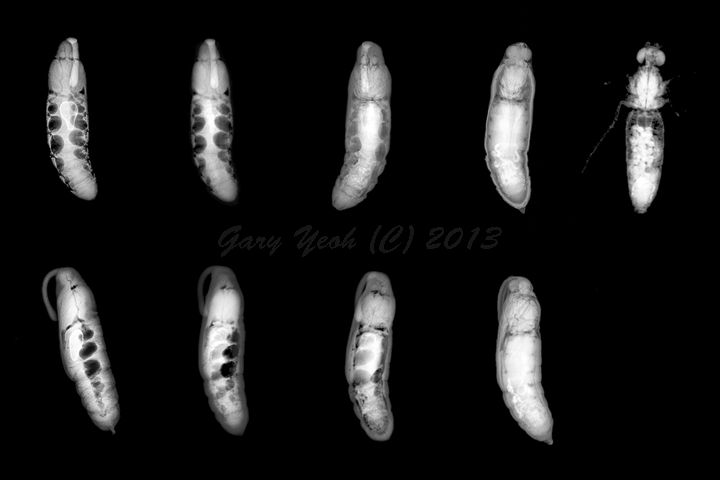
5. Pupa Stage Examples
5.1 Butterfly Pupa
One of the most well-known examples of the pupa stage is that of butterflies. After the caterpillar stage, the butterfly pupa, often referred to as a chrysalis, is formed. The chrysalis is usually suspended from a branch or some other surface, providing a secure location for the transformation to unfold. Inside the chrysalis, the caterpillar undergoes a complete restructuring, with the formation of wings, legs, and other adult features. When ready, the adult butterfly emerges from the chrysalis, ready to take flight and fulfill its ecological role.
5.2 Moth Pupa
Similar to butterflies, moths also undergo a pupa stage as part of their life cycle. However, moth pupae differ in appearance from butterfly chrysalises. Moth pupae are typically covered by a silk cocoon, providing additional protection during the metamorphosis process. The pupal stage of moths is often spent buried in leaf litter or soil, hidden from potential predators. Within the cocoon, the caterpillar transforms into its adult form, ready to navigate the nighttime skies and contribute to various ecological processes.
5.3 Beetle Pupa
Beetles, a diverse group of insects, also experience a pupa stage. Beetle pupae, known as pupae or cocoons, exhibit various forms and structures, depending on the beetle species. Some beetle pupae are enclosed in hard shells or cases, protecting them from external threats. Others may be located within burrows or concealed in leaves, providing a safe environment for their transformation. Inside the pupa, the beetle undergoes extensive developmental changes, preparing for life as a fully formed adult beetle.
6. The Role of Hormones
6.1 Hormonal Changes during Pupa Stage
Hormones play a pivotal role in orchestrating the intricate processes of metamorphosis during the pupa stage. Various hormones, such as ecdysone and juvenile hormone, regulate and coordinate the timing and sequence of events. Ecdysone acts as a molting hormone, initiating the breakdown of larval tissues and the shedding of the old cuticle. Juvenile hormone, on the other hand, controls the balance between larval and adult structures, ensuring the proper differentiation and development of adult tissues. The interplay of these hormones dictates the pace and direction of the metamorphosis process.
6.2 Role of Ecdysone
Ecdysone, a crucial hormone in insects, triggers the molting process by stimulating the synthesis and release of enzymes responsible for breaking down the old cuticle. As ecdysone levels rise, the larval tissues begin to undergo histolysis, allowing for the subsequent development of adult structures. Ecdysis, the process of shedding the old cuticle, is a vital step in the pupa stage, enabling the insect to transform into its adult form.
6.3 Juvenile Hormone
Juvenile hormone is another key hormone involved in pupa stage development. It regulates the balance between larval and adult structures, repressing the differentiation of adult tissues until the appropriate time. Juvenile hormone acts as a signal to maintain the larval state, preventing the premature development of adult features. As the pupa stage progresses, juvenile hormone levels decrease, allowing for the full expression of adult structures and the completion of metamorphosis.
6.4 Pheromones Released
During the pupa stage, insects may release pheromones, chemical substances that serve as communication signals. These pheromones can attract potential mates, facilitate courtship rituals, or provide information about the insect’s readiness to emerge from the pupal stage. Pheromones play a crucial role in the reproductive behavior of insects, ensuring successful mating encounters and the continuation of their species.
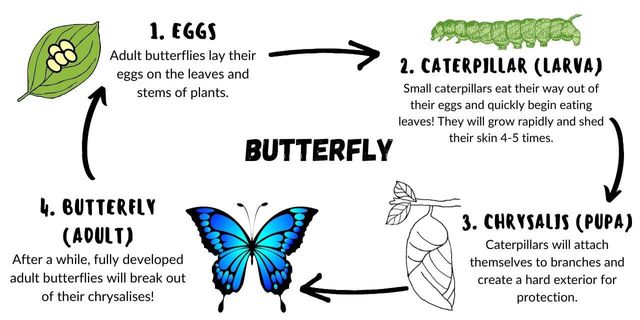
7. Environmental Factors Affecting Pupa Stage
7.1 Temperature
Temperature is a vital environmental factor that can significantly influence the pupa stage of insects. Different insect species have specific temperature requirements for successful pupation and emergence. Too low or too high temperatures can disrupt developmental processes and even cause mortality. In some cases, temperature fluctuations can trigger diapause, a state of dormancy or suspension of development, enabling insects to survive unfavorable conditions until the environment becomes more suitable.
7.2 Humidity
Humidity levels in the environment also play a significant role during the pupa stage. Insects require adequate moisture to prevent desiccation and ensure proper development. High humidity can facilitate the physiological processes taking place inside the pupa, while low humidity may lead to dehydration and developmental abnormalities. Maintaining optimal humidity levels is crucial for the successful completion of metamorphosis.
7.3 Light
Light, particularly photoperiod, affects the timing and duration of the pupa stage in many insect species. Photoperiod refers to the length of the day and night cycle experienced by an insect. Changes in day length can act as a signal, regulating the onset of pupation and the timing of adult emergence. Some insects may require specific light conditions to initiate pupation, while others may rely on darkness or specific light wavelengths to trigger downstream developmental processes. Light cues are crucial for synchronizing pupation with favorable environmental conditions.
7.4 Nutrition
The availability and quality of nutrition during the larval stage can have a profound impact on the pupa stage and subsequent adult emergence. Insects rely on food resources to fuel their growth and development. Insufficient or imbalanced nutrition during the larval stage can result in developmental abnormalities or reduced fitness during adulthood. Adequate nutrition is vital for the synthesis of proteins, lipids, and other essential nutrients necessary for the structural and physiological changes taking place within the pupa.
8. Peculiar Pupa Adaptations
8.1 Camouflage and Mimicry
Some insect pupae have developed remarkable adaptations, such as camouflage and mimicry, to enhance their survival chances. Camouflage involves blending in with the surrounding environment, making it challenging for predators to detect the pupa. Pupae may resemble leaves, twigs, or other elements of their habitat, effectively concealing themselves from potential threats. Mimicry, on the other hand, occurs when the pupa resembles a harmful or toxic organism, deterring predators from approaching. These adaptations provide an added layer of defense during the vulnerable pupa stage.
8.2 Diapause in Pupae
Diapause is a unique adaptation observed in many insect pupae, allowing them to enter a dormant state when environmental conditions become unfavorable. During diapause, the insect suspends its developmental processes, reducing metabolic activity and conserving energy. Diapause can be triggered by various cues, such as changes in temperature, photoperiod, or resource availability. This adaptation enables pupae to survive harsh seasons or unfavorable environmental conditions, ensuring their emergence as adults when conditions improve.
8.3 Peculiar Pupa Shapes
Pupae exhibit diverse shapes and sizes, often reflecting the specific adaptations and lifestyles of the insects they belong to. Some pupae have elongated or streamlined shapes, allowing them to burrow into substrates or occupy narrow crevices. Others may have spines, bristles, or hooks, providing additional protection against predators. These unique pupa shapes exemplify the remarkable diversity of insect pupae and their ability to adapt to various ecological niches.

9. Ecological Significance
9.1 Pollination
Metamorphosis and the pupa stage play a crucial role in pollination, a vital ecological process. Adult insects, such as butterflies, moths, and bees, emerge from the pupa stage equipped with specialized structures for collecting nectar and pollen. As they visit flowers in search of food, they inadvertently transfer pollen between plants, facilitating cross-pollination and the formation of seeds. Without the metamorphic journey of these pollinators, many plants would struggle to reproduce and maintain healthy populations.
9.2 Seed Dispersal
Insects that undergo metamorphosis and pass through the pupa stage also contribute to seed dispersal, another essential ecological process. By consuming fruits or seeds during their larval or adult stages, insects become unknowing agents of dispersal. Some insects feed on the fleshy parts of fruits, subsequently excreting intact seeds away from the parent plant. Others inadvertently transport seeds on their bodies or within their feces. This process enhances the distribution and colonization of plant species, ensuring their genetic diversity and ecological success.
9.3 Natural Pest Control
Metamorphosis, and specifically the pupa stage, plays a vital role in natural pest control. Insects such as ladybugs and lacewings undergo complete metamorphosis and emerge as voracious predators in their adult form. These beneficial insects feed on pests such as aphids, mites, and caterpillars, helping to regulate their populations. By controlling pest numbers, these insect predators minimize crop damage, reduce the need for chemical pesticides, and contribute to a balanced and sustainable ecosystem.
10. Metamorphosis and Human Applications
10.1 Medical Research and Drug Development
The study of metamorphosis, particularly the pupa stage, has significant implications for medical research and drug development. The biochemical and hormonal processes that underlie metamorphosis in insects share similarities with certain cellular processes in humans. Understanding the mechanisms involved in insect metamorphosis can provide valuable insights into human development, tissue regeneration, and disease progression. Furthermore, insect-derived compounds, such as antimicrobial peptides, have shown promise in treating infectious diseases and inspiring the synthesis of new drugs.
10.2 Biomimicry and Engineering
Metamorphosis and the unique adaptations observed during the pupa stage inspire innovative solutions in engineering and design. Biomimicry, the imitation of natural processes and structures, finds inspiration in the complex and efficient transformations occurring within the pupa. The principles of metamorphosis can be applied in the development of materials, robotics, and architectural systems. By harnessing the strategies employed during insect metamorphosis, engineers can create more sustainable and resilient technologies that mimic the remarkable efficiency and adaptability found in nature.
In conclusion, metamorphosis, with the pupa stage as its centerpiece, is a captivating and transformative process that allows certain insects to undergo profound physiological and structural changes. The pupa stage serves as a time of rest, reorganization, and preparation for emerging as an adult. Through hormonal regulation, cellular differentiation, and environmental cues, insects shape their bodies into their final, distinct form. The adaptations, ecological significance, and human applications associated with metamorphosis highlight the importance and marvel of this magical process in the natural world.
